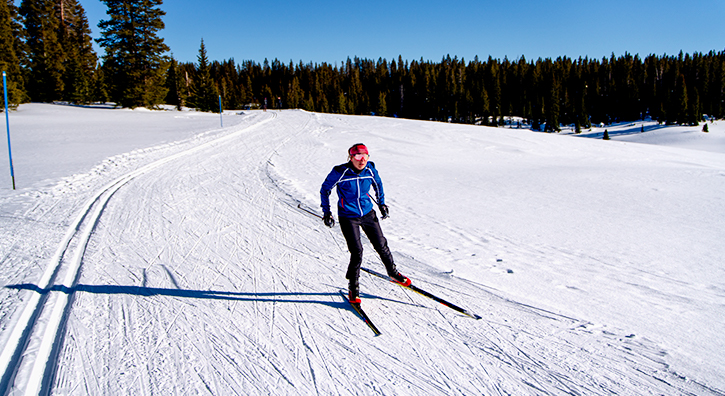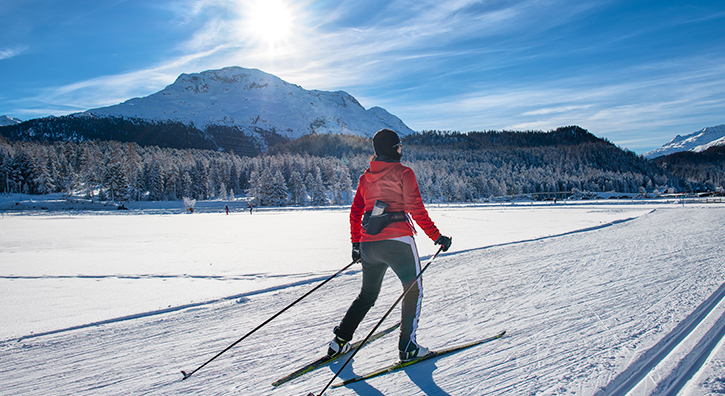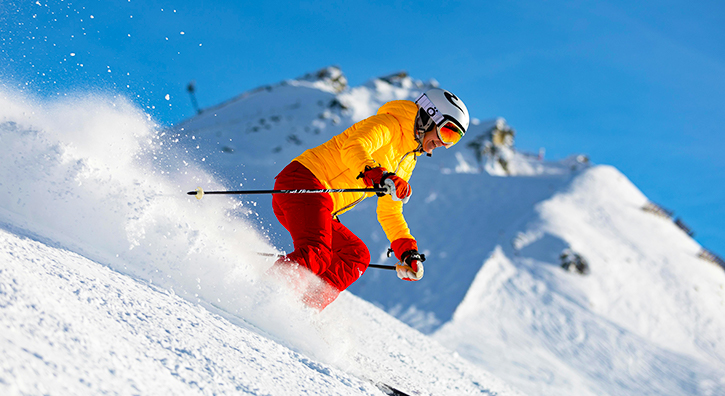0800 260 5082
Available from Monday to Friday from 9am to 7pm, and Saturday from 10am to 7pm. Closed on Sunday.
Available from Monday to Friday from 9am to 7pm, and Saturday from 10am to 7pm. Closed on Sunday.
Nordic skiing, also known as cross-country skiing, is a serene yet exhilarating winter activity that can be enjoyed by everyone, from beginners to experienced skiers. Whether you're looking to explore peaceful snow-covered trails, enjoy a family activity, or get a full-body workout, Nordic skiing is an excellent option. Unlike alpine skiing, Nordic skiing involves skiing on flatter terrain with a focus on endurance and technique, making it accessible to people of all ages and abilities. This classic winter discipline requires balance, coordination, and stamina, offering both relaxation and challenge.
The Nordic skiing experience involves gliding through snow-covered landscapes on skis, feeling the cool winter air as you move through forests, fields, and across scenic mountain trails. Whether you're out for a leisurely session or aiming for a more intense workout, Nordic skiing provides a unique way to experience the winter season. Most Nordic skiing locations offer a variety of trails suitable for different skill levels, from easy, flat routes to more challenging, uphill paths. It’s an activity that combines exercise, exploration, and enjoyment of nature, making every outing a rewarding experience.
Find out the best destinations for your ski holidays
When looking for the perfect place for Nordic skiing, it’s best to choose resorts or parks with dedicated cross-country ski trails. These trails are usually well-maintained and groomed to provide smooth, enjoyable skiing experiences. Resorts offering Nordic skiing often have rental equipment available and may also offer guided tours with an instructor to help you explore the trails more fully. Popular locations often feature diverse terrain, offering both easy routes for beginners and more advanced trails for experienced skiers.
Nordic ski trails are designed to provide different levels of difficulty, with trails ranging from beginner-friendly loops to challenging, steep paths. Some areas feature groomed trails, ensuring smooth skiing conditions, while others may have backcountry routes that provide a more rugged, adventurous experience. If you prefer skate skiing, look for trails that are groomed with a wider lane to accommodate this technique. Always check the trail conditions before heading out and make sure you choose a route that matches your skill level.

It’s highly recommended to book your Nordic skiing adventure in advance, especially during peak seasons. Many resorts and parks may require prior reservations for rentals, guided tours, or trail passes. If you plan to visit popular destinations during the holidays or weekends, be sure to book early to secure your spot. Additionally, always check the weather and snow conditions to ensure the trails are open and safe before you go.

When heading out for a Nordic skiing adventure, it’s important to dress appropriately for the weather. Wear moisture-wicking layers, waterproof pants, jackets, and gloves to ensure you stay dry and warm throughout your session. Nordic skiing can be physically demanding, so it’s essential to wear clothing that allows freedom of movement while protecting you from the cold. A long and lightweight jacket can help keep you warm without restricting mobility.
Unlike downhill skiing, Nordic skiing doesn’t require a helmet, but poles are essential for maintaining balance and rhythm. Ensure your poles are the correct length for your height and skiing style. If you plan to venture onto icy terrain or steep sections, tip-enhanced poles with extra grip can provide better stability. Depending on the trail and conditions, additional gear like sunglasses or sun protection may also be necessary to keep you comfortable during your adventure.

Comfortable and warm footwear is key for Nordic skiing, as your boots need to fit properly and provide support. Ski boots should be comfortable and flexible, allowing you to move easily while offering enough warmth to keep your foot dry. Make sure your boots are compatible with the bindings of your skis for maximum comfort and safety. Some modern ski boots feature an advanced liner for better insulation and moisture control.

Before heading out, assess your level of experience with Nordic skiing. If you're new to the sport, consider starting on easy, flat trails and gradually progressing to more challenging routes as your confidence grows. If you're unsure about your ability, don’t hesitate to ask a guide or instructor for recommendations on suitable trails.

Every Nordic skiing location will have safety guidelines to ensure the safety of all skiers. Be sure to follow the posted trail signs and always ski in the correct direction. Respect other skiers, particularly on shared trails, and avoid overcrowding the path. If you're skiing in a classic track, be mindful of others using the skate lane or walking beside you.
Check the weather forecast before you go Nordic skiing, as conditions can change quickly. Some trails may close due to storms, snow conditions, or other safety risks. Always inquire about trail conditions at the resort or park and make sure that the trails are safe for skiing before you begin your outing. Carrying a small emergency kit with basic essentials can be a smart precaution, especially if you're venturing into more remote areas.